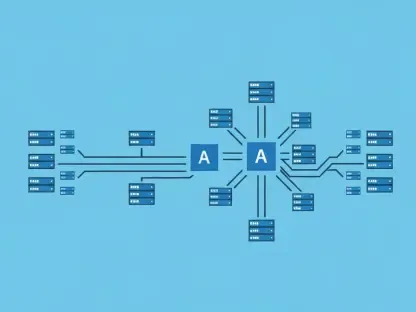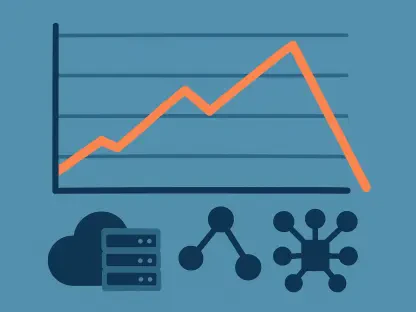The Customer Identity and Access Management (CIAM) software market is on the brink of substantial growth, driven by burgeoning digital transformation initiatives and heightened security concerns. This article aims to elucidate the factors propelling this market’s expansion, examining key players, technological advancements, and regional dynamics.
CIAM software is becoming an indispensable tool for enterprises looking to manage customer identities, ensure secure access, and provide personalized experiences. As digital interactions proliferate, the spotlight on CIAM solutions intensifies, making it a pivotal component in organizational security strategies.
Market Dynamics and Economic Impact
Economic Challenges and Opportunities
Economic slowdowns have presented challenges for the CIAM software market, particularly affecting supply chains and production lines. The resulting supply-demand gap has necessitated innovative solutions and adaptive strategies. Despite these hurdles, the market offers lucrative opportunities for firms that can navigate these complexities adeptly. The necessity to adapt to economic fluctuations and minimize vulnerabilities in supply chains underscores the urgency for a strategic approach.
Companies are urged to stay ahead of these shifts, recognizing the need to balance demand surges with supply chain resilience. This strategic approach can mitigate potential disruptions and unlock market potential. By prioritizing resource optimization and workforce management, businesses can better withstand the economic turbulence that continues to fluctuate globally, positioning themselves advantageously in the dynamic CIAM landscape. Such resilience efforts, while challenging, are pivotal in maintaining a competitive edge in a fluctuating market environment.
Technological Trends Driving Growth
The technological landscape of CIAM software is marked by continuous innovation. Advanced identity verification techniques, integration of artificial intelligence (AI), and enhanced user experience solutions are propelling the market forward. Automating identity management processes boosts security and significantly improves operational efficiency. AI plays a central role in personalizing user interactions and enhancing real-time responsiveness, reinforcing security measures without compromising usability.
Forward-thinking enterprises are leveraging these technologies to offer seamless and secure customer interactions. Such innovations are poised to redefine customer engagement protocols and set new benchmarks in the industry. With increasing reliance on digital interactions, CIAM software must evolve to address emerging security threats and regulatory requirements while keeping pace with user expectations for seamless experiences. As AI, machine learning, and biometric verifications continue to evolve, these systemic enhancements will drive further technological advancements within the sector.
Key Players and Strategic Movements
Profiling Major Market Players
Prominent companies, including Rippling, Azure Active Directory, Auth0, BeyondTrust, and others, are at the forefront of the CIAM landscape. These market leaders are continually evolving, deploying new technologies, and executing strategic mergers and acquisitions (M&A) to bolster their positions. By expanding their technological capabilities and diversifying their product portfolios, these companies aim to meet the diverse and complex needs of their customers.
These organizations are expanding their portfolios with cutting-edge CIAM features, enhancing their value propositions. Close monitoring of these key players can yield insights into market trends and emerging opportunities. For instance, product enhancements like multi-factor authentication and zero-trust architecture are some innovations these companies prioritize. By examining these strategic moves, stakeholders can glean valuable insights into innovation patterns and competitive strategies shaping the industry landscape.
Strategic Initiatives in the Industry
Market leaders are adopting a range of strategic initiatives to strengthen their foothold. Technological expansions, product launches, and regional penetrations are among the tactics employed. By focusing on continuous improvement and strategic growth, these companies aim to sustain their competitive edge. Initiatives like geographical expansion and strategic partnerships enable these enterprises to tap into new markets and drive broader adoption of their CIAM solutions.
Such initiatives are crucial in navigating the dynamic CIAM landscape, helping companies to align with evolving customer needs and regulatory requirements. Effective strategies ensure that organizations remain relevant and resilient in a fast-changing market. Consistently delivering innovative solutions and maintaining agility in strategic planning is quintessential for long-term success. As companies continue to deploy these initiatives, they not only solidify their market positions but also set the standards for industry excellence.
Regional Analysis and Regulatory Impact
Exploring Regional Growth Patterns
Different regions exhibit varied growth dynamics in the CIAM market. North America, Europe, and Asia-Pacific, for instance, show distinct adoption rates due to their unique technological environments and regulatory landscapes. Understanding these regional differences is critical for stakeholders looking to tailor their market approaches. In North America, the high concentration of tech-savvy consumers and stringent regulatory frameworks drive CIAM adoption, while Europe’s GDPR has set high standards for privacy and compliance.
These regions are also influenced by localized economic conditions, impacting the overall velocity of CIAM adoption. Tailored strategies that consider regional idiosyncrasies can optimize market penetration and performance. For example, in Asia-Pacific, the rapid digitization and rising cybersecurity threats present considerable growth opportunities, but vendors need to navigate diverse regulatory environments and infrastructure variances. Regional analysis highlights that becoming attuned to these local dynamics is essential for stakeholders aiming to optimize their market strategies.
Navigating Regulatory Frameworks
Regulatory compliance is a critical aspect of CIAM implementation. Evolving data privacy laws, such as the European Union’s General Data Protection Regulation (GDPR) and the California Consumer Privacy Act (CCPA) in the United States, necessitate robust CIAM solutions that ensure adherence. Staying compliant not only safeguards against legal repercussions but also fosters customer trust. Enterprises investing in CIAM systems must architect their solutions with stringent compliance measures and continuous updates to align with regulatory changes.
Enterprises must remain vigilant, continually updating their CIAM frameworks to align with regulatory changes. Proactive compliance measures can be a vital differentiator in the marketplace. By ensuring that CIAM solutions are not only robust but also flexible enough to adapt to changing regulations, companies can establish a trust-based relationship with their customers. Compliance-oriented strategies not only mitigate risks but also enhance brand credibility and customer loyalty, crucial for long-term competitive advantage in a regulation-heavy environment.
Market Segmentation and Customization Needs
Product Types and Applications
The CIAM market is segmented based on product types and end-user applications. Cloud-based and web-based solutions each offer distinct advantages, catering to varied organizational needs. Large enterprises tend to favor comprehensive solutions that provide extensive capabilities, robust scalability, and integration with existing enterprise systems, while SMEs look for solutions that balance scalability with cost-efficiency. This segmentation allows vendors to target their offerings more effectively, addressing the specific requirements and scale of their clients.
Understanding these segments helps vendors tailor their offerings, ensuring they meet diverse customer requirements. This targeted approach can drive adoption and satisfaction across different market segments. By focusing on delivering specific functionalities tailored to distinct customer groups, CIAM providers can achieve higher user engagement and operational efficiency. Segmented market insights guide vendors in optimizing their product development, marketing strategies, and customer support services, enhancing overall market presence.
Customization and Personalization
For enterprises aiming to manage customer identities, secure access, and deliver customized experiences, CIAM software is becoming an essential tool. As digital interactions become more prevalent, the importance of CIAM solutions is magnified, making them a vital part of organizational security strategies.
Moreover, the rise in cyber threats and the implementation of stringent data privacy regulations are further accelerating the demand for robust CIAM solutions. Companies are increasingly prioritizing customer data protection, identity verification, and seamless authentication processes. Technological advancements such as AI and machine learning are also enhancing the capabilities of CIAM systems, offering more sophisticated and efficient security measures. As these trends continue to evolve, they underscore the critical role of CIAM in a rapidly digitizing world.









